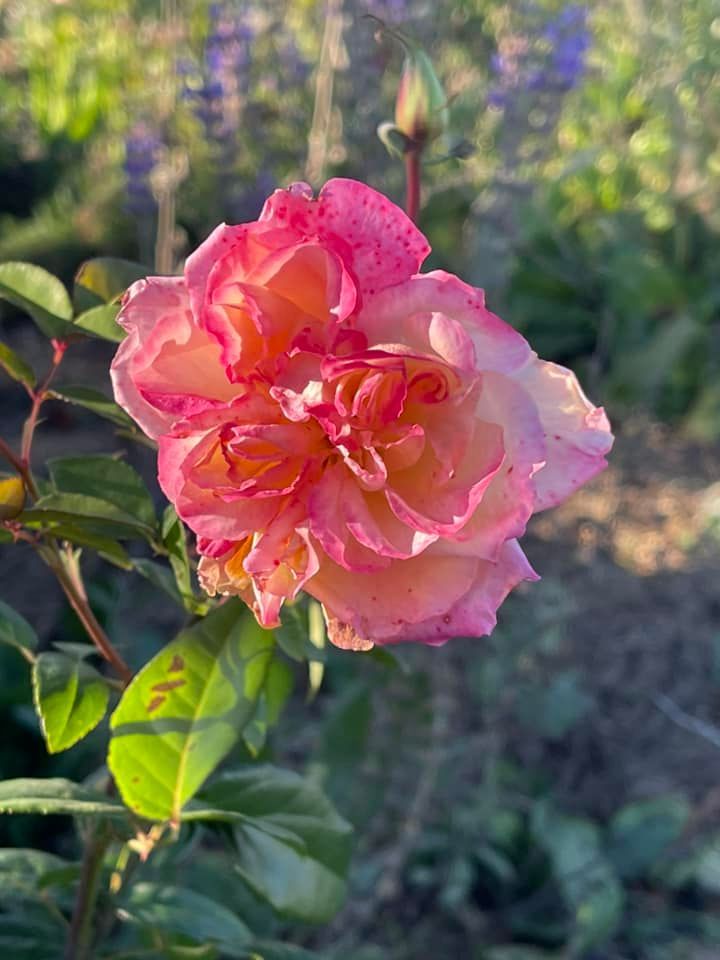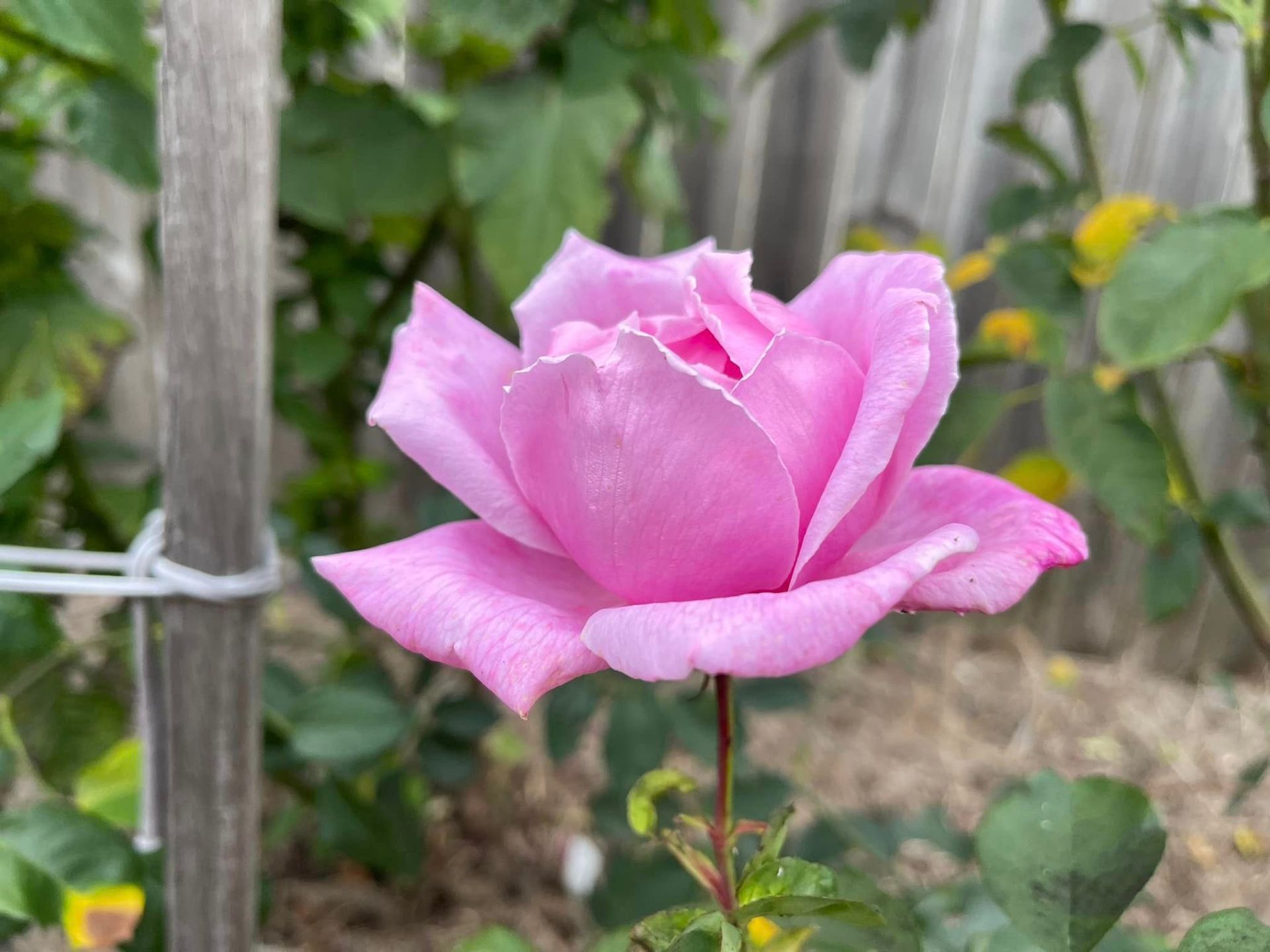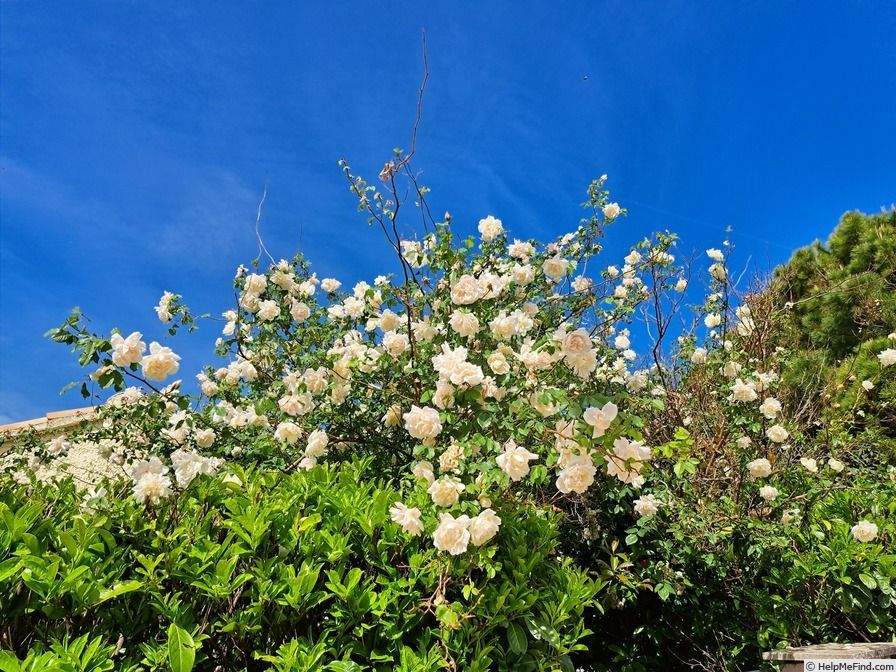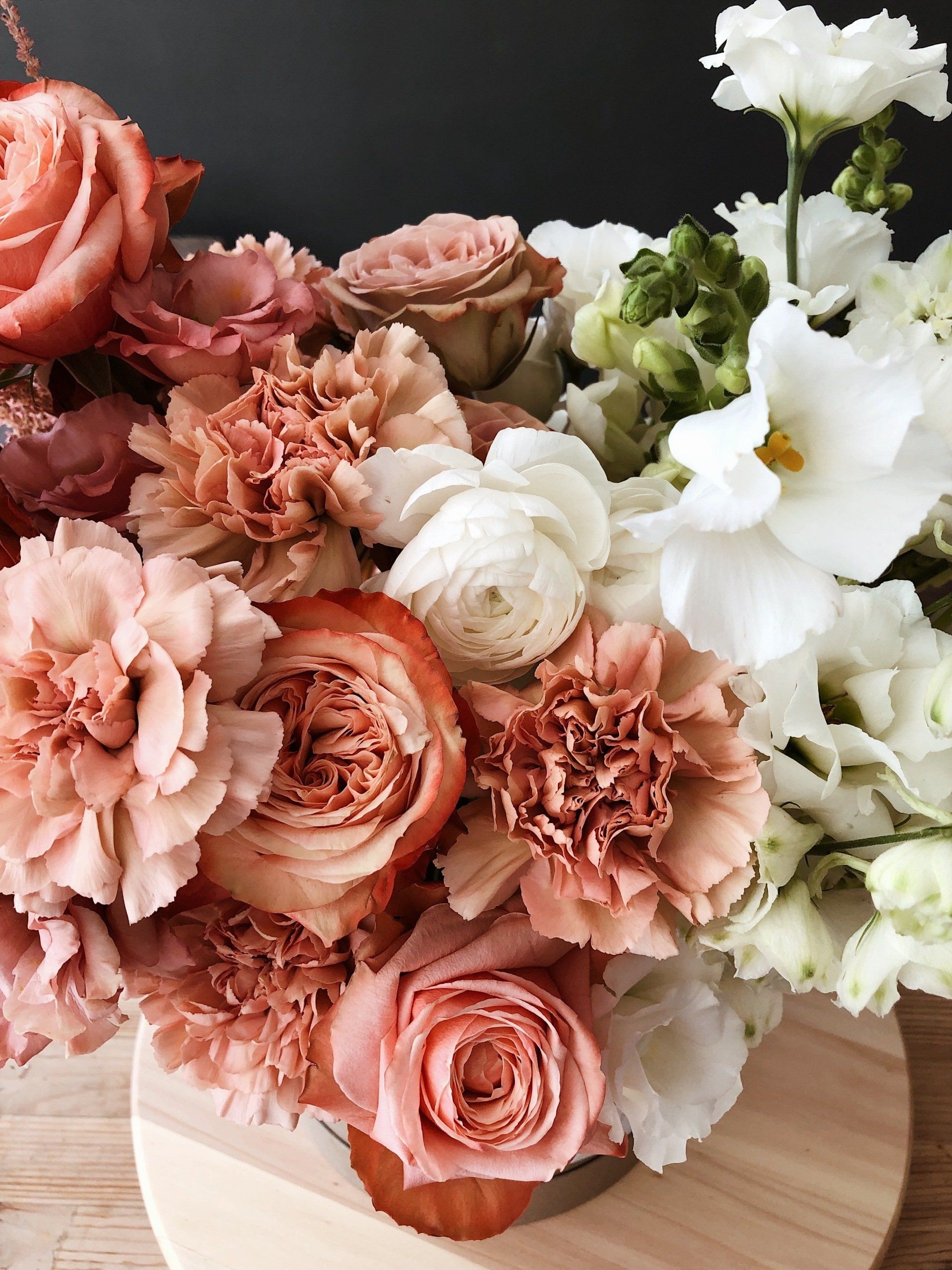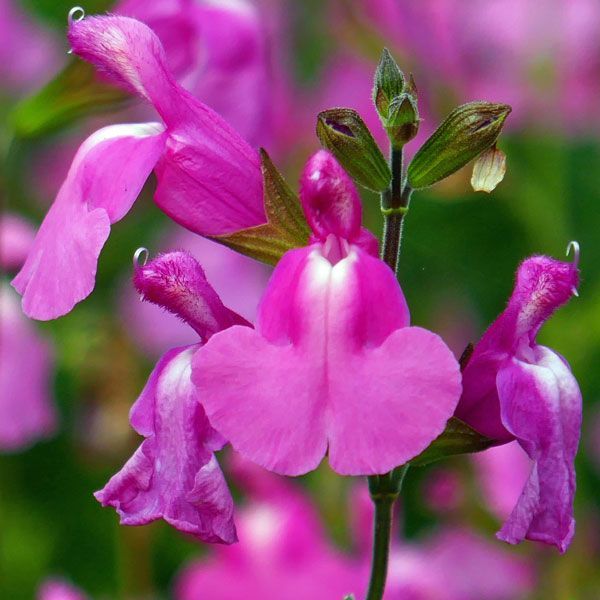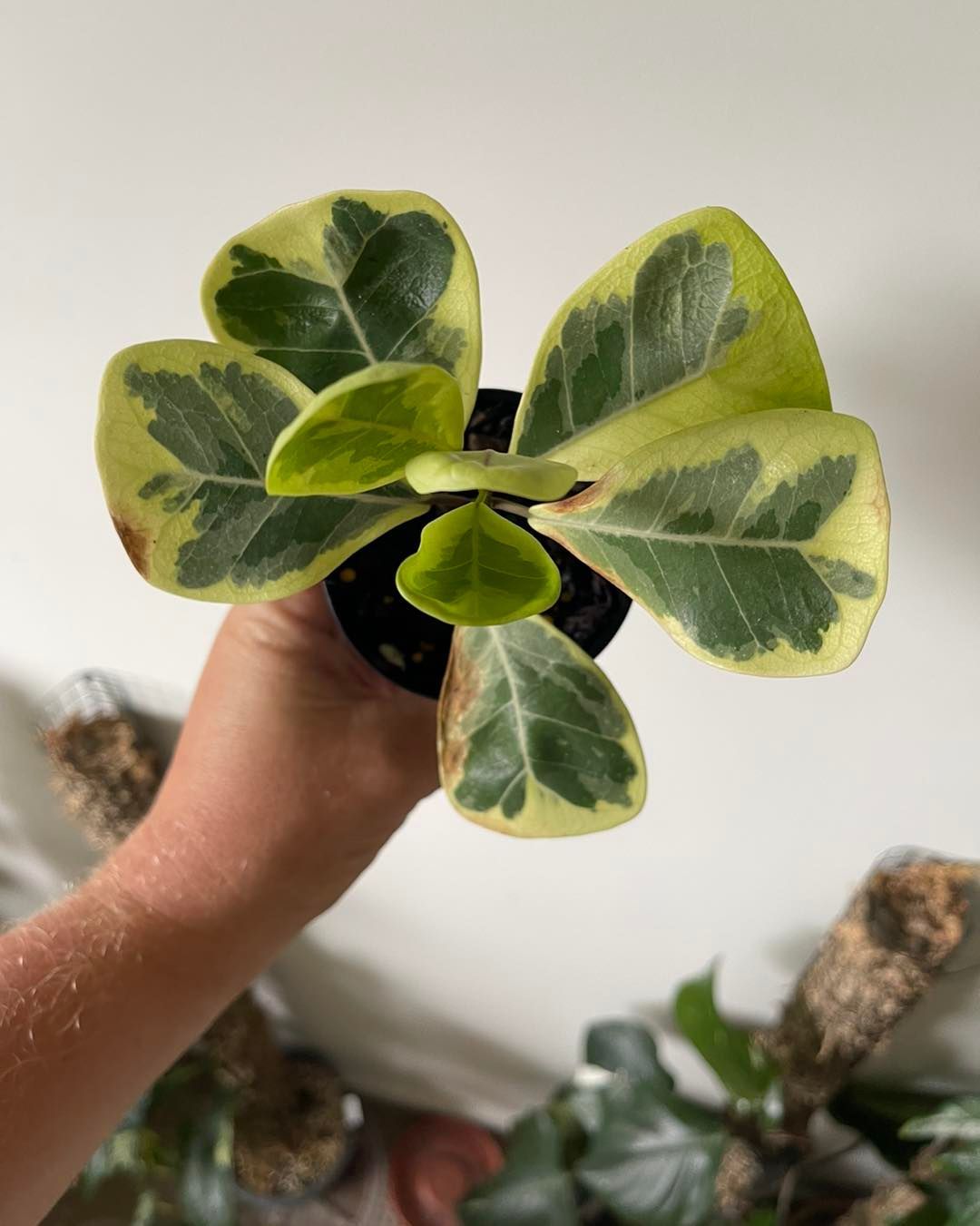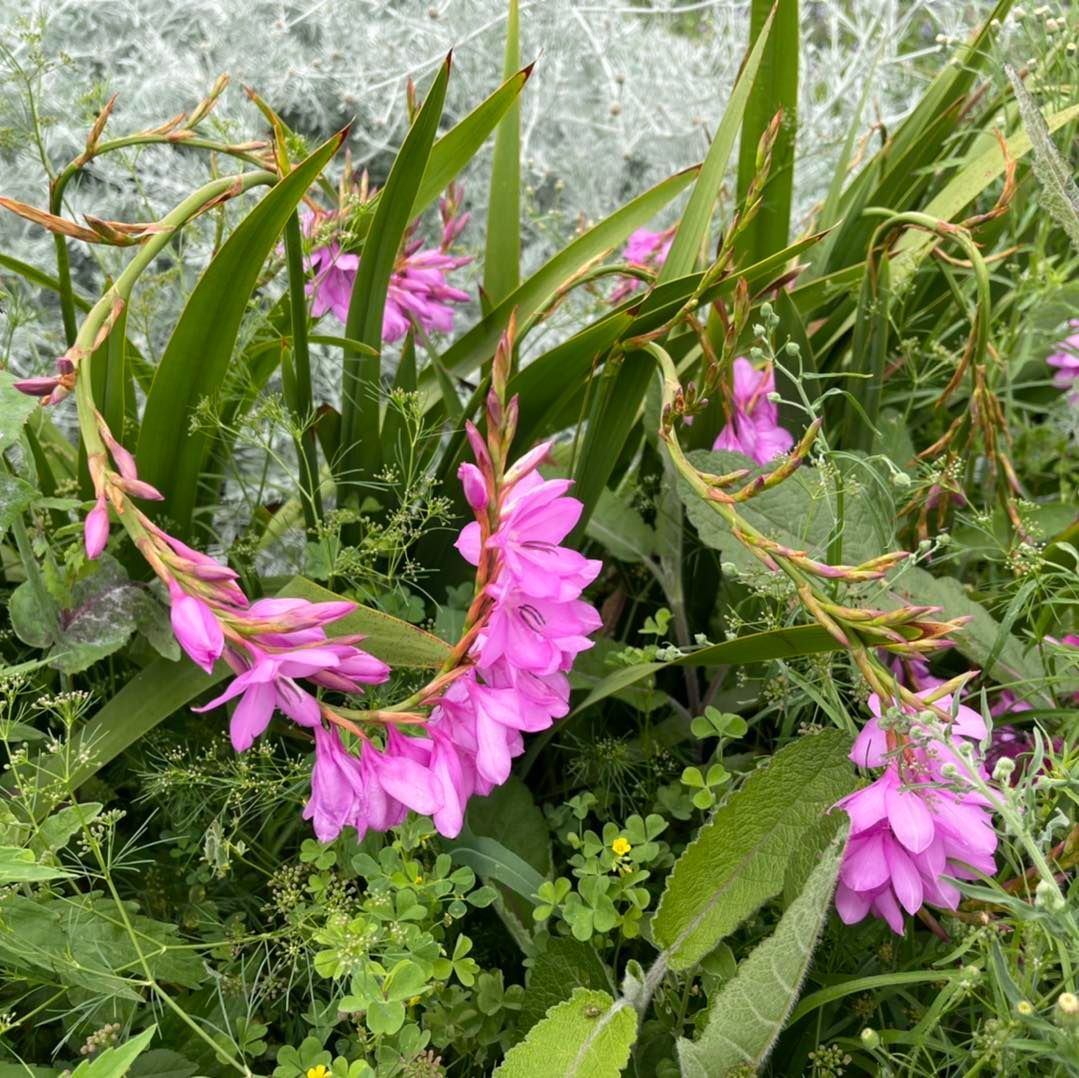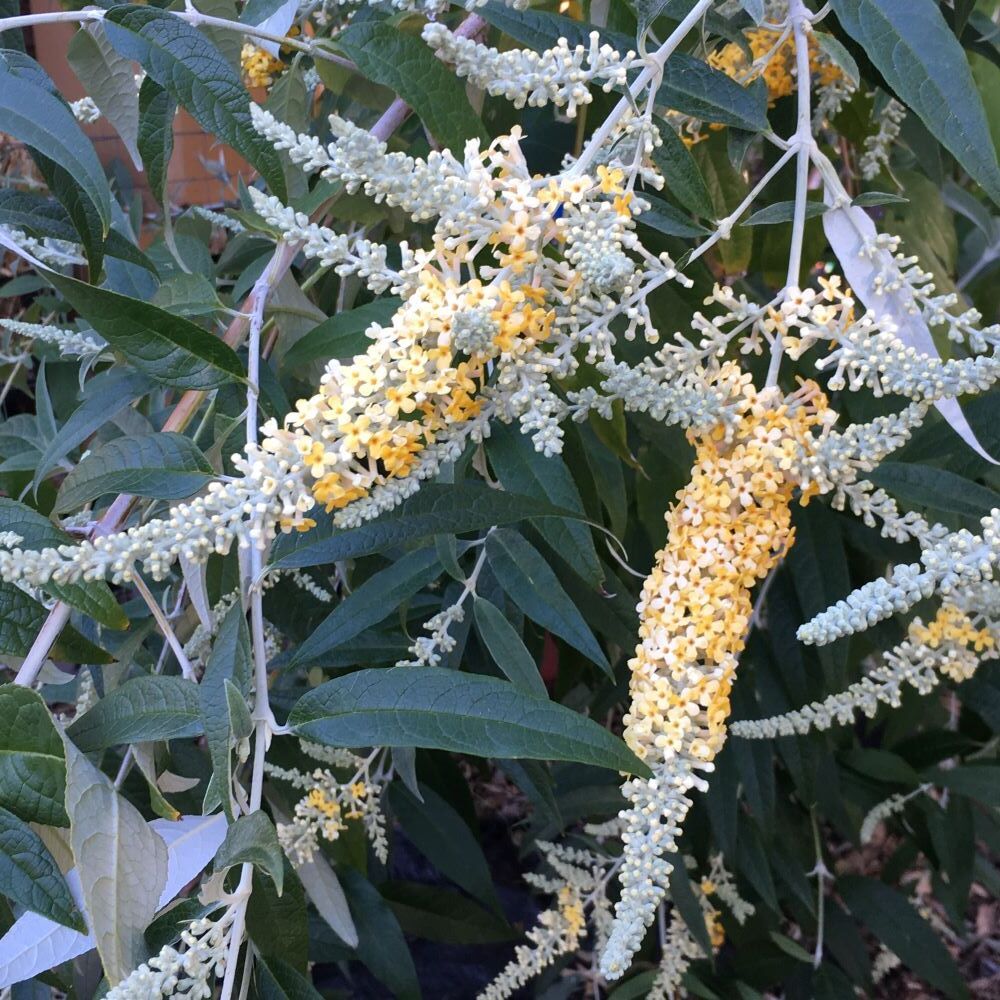Using Grasses in our Gardens
Ornamental Grasses are a collection of lots of species, most common are Miscanthus, Poa, Calamagrotis, Brizia, they are clump-forming ornamental grasses that are well worth growing. They have some of the best flowers of all the ornamental grasses, producing large, feathery plumes in late summer, in shades of silver, buff or pale purple-pink, depending on the variety.
Their fine, arching foliage is attractive too – some varieties start out fresh green before turning orange or bronze in autumn, while others have variegated leaves.
Although some varieties are deciduous their faded foliage and flower heads remain on the plant over the winter months, giving structure and interest at a time when the garden is bare.
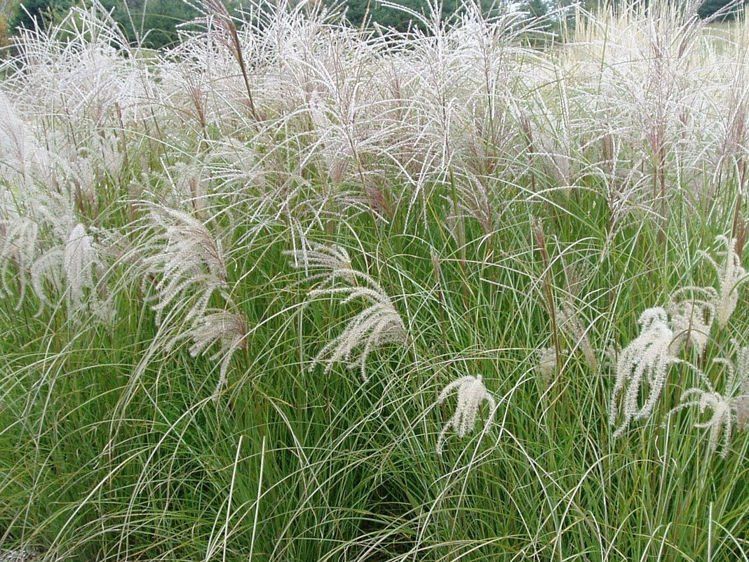
Ornamental Grasses are known to change colour
Native to Asia, parts of the Pacific and east Africa, miscanthus are becoming increasingly popular in the Australia, with many new varieties from Europe and the US now available. The most widely available are the Miscanthus sinensis cultivars, which hail from China, Japan, Taiwan and Korea. There’s now a miscanthus for every garden, from compact varieties that reach no more than 80cm tall, to larger varieties that can reach 2.5m, in a variety of forms and colours.
Swaying gently in the wind, ornamental Grasses bring movement and structure to any planting scheme and combine brilliantly with perennials. The larger varieties can be used as a screen or as a focal point, while the more compact varieties can be woven through borders or grown in pots. The flowers can be dried for flower arranging or for Christmas wreaths.
And if that’s not all, Ornamental Grasses are hardy, low-maintenance, don’t need staking and grow well in most soils. They’re largely free of pests and diseases, too. They should reach their ultimate height and spread in two to three years.
Miscanthus can be planted all year round, but ideally plant them in spring or autumn. Dig a planting hole, place the plant in the hole so it’s planted at the same depth as it was in the original pot, backfill and firm in. Water plants in well.
Ornamental Grasses should survive on average rainfall across most of the country. They don’t need feeding, over watering and over feeding causes them to flop in the garden.
It's best to plant Miscanthus in Spring or Autumn
Cut back the dead leaves in late winter to early spring except Poa they are best done early Autumn as their growth period is winter and spring.
Divide congested clumps in early spring. Very mature clumps are often tricky to lift, so have a friend on hand to help. In order to divide large clumps push two garden forks into the crown of the plant back to back and pull the handles down. This should be done ever 3-7 years depending on the climate and species.
As always,
Happy Gardening
Matthew
Follow us on instagram
#TheGroveCountryGardens
-
Osteospermum Unicorn looking lovely, should I do some cuttings for the nursery?!?Button
-
Not long now before Broccoli and Mini Cabbage harvest commences! It’s been a wonderful season for the Brassicas with the mild days, can’t wait to start using them in the kitchen 💚Button
-
Was a stunning sunset over the Wyreema garden last night as I watered the pot plants.Button
-
Salvia adenophora the giant of giant sages! Easily pushing 4m in my garden this giant needs to be planted with considerable consideration! Fresh stocks available online of this behemoth of a plant! https://www.thegrovecg.com/product/Salvia-adenophora-p582820163 #frosthardy #sage #droughttolerant #frosthardygarden #frosthardyflowers #salvia #droughttolerantplants #hardy #droughttolerantlandscapeButton
-
Someone was mentioning the Straw Rose in the comments and I dug back and found these beautiful images of this awesome little rose, it’s weirdly quite unknown to most gardeners around the country. Given how hardy and disease resistant it is it’s a massive shame! We have some lovely plants in the nursery right now that will be blooming for you in no time! https://www.thegrovecg.com/product/Rosa-Polyantha-Straw-Rose-p463853291 #roses #heritage #heirloomroses #heritagerose #rosesofinstagram #heirloom #roseButton
-
Alistair Clark’s Suitor is small but mighty little Polyantha Rose, this is just one flower stem! I can hardly believe it, only growing 30-40cm high and wide it’s great for pots as well. Not the most vigorous rose but well worth tucking into areas between other perennials. A tough little rose from the 1940’s and I’m glad to have it in my garden and now a few are available on our website to share! https://www.thegrovecg.com/product/Rosa-Polyantha-Suitor-p670578653Button
-
Alistair Clark’s Suitor is small but mighty little Polyantha Rose, this is just one flower stem! I can hardly believe it, only growing 30-40cm high and wide it’s great for pots as well. Not the most vigorous rose but well worth tucking into areas between other perennials. A tough little rose from the 1940’s and I’m glad to have it in my garden and now a few are available on our website to share! https://www.thegrovecg.com/product/Rosa-Polyantha-Suitor-p670578653Button
-
Hope everyone had a pleasant Monday ❤️ I have just restocked dozens of Salvias and a bunch of Heritage Roses to the website! I hope you’ll check them all out! thegrovecg.com is where you’ll find them all! #frosthardy #sage #droughttolerant #frosthardygarden #frosthardyflowers #salvia #droughttolerantplants #hardy #droughttolerantlandscape #roses #heritage #heirloomroses #heritagerose #rosesofinstagram #heirloom #roseButton
-
Mrs Albert Nash is a delightful Alistair Clark rose, nothing can hold her back from blooming and what a beautiful fragrance I wish you could smell her! A big restock of heritage roses coming tonight including 15 varieties we have never listed before! Can’t wait to share them all with you! #roses #heritage #heirloomroses #heritagerose #rosesofinstagram #heirloom #rose #alistarclarkButton
-
Growing annuals on mass is so much fun 🥴 90% of the ones we planted in May are looking fantastic and are growing well! I am never planting ranunculus into the ground directly I am absolutely going to pot them first and grow them on so I don’t end up with gaps for the neighbourhood cats to use as their toilet, I may have been a little over zealous with the compost and a few violas are a bit burnt 😅 whoops! So I’ll have to amend the few patches and replant this week and we will be well on our way for Carnival of Flowers in September!Button
-
Just love the winters sun, it casts such beautiful shadows even in the middle of the day 💙🤍💙Button
-
Just love the winters sun, it casts such beautiful shadows even in the middle of the day 💙🤍💙Button
-
Really have to harvest these carrots before they get any bigger 🤣Button
-
A beautiful rose today to get us through this frosty start! Our first proper frost of the year at the wyreema garden today which is very late compared to most years, but I’ll take it, kill off some of those bad bugs and get the plants into dormancy. The Rose is of course one of the nicest China Roses Archduke Charles.Button
-
A lovely new batch of Heritage Roses coming along nicely, slowing down a little now in this cool change but still very happy with how they are lookingButton
-
A lovely new batch of Heritage Roses coming along nicely, slowing down a little now in this cool change but still very happy with how they are lookingButton
-
25% off all remaining Alstroemerias online! Get in quick these beautiful perennials won’t last long! Share with your friends and be rewarded on spring with a beautiful display of colour! thegrovecg.comButton
-
So much produce in the veggie garden at the moment, winter is my favourite time for growing vegetables. The tomatoes are off and racing looking healthier and happier than my summer crop 😅 these are all self sown so who knows what they are, I have a little greenhouse over them now and I thinned a few so we may get some winter tomatoes!Button
-
Yes it winter, no the Dahlias don’t care 🤣 She isn’t pretty but I’ll take the colour!Button
-
Such a stunning day after 12mm of rain yesterday, time to get the veggie garden weeded and finish my potato harvest 💚 enjoy your Sunday everyoneButton
-
Our sweet peas are off and racing! I found these jute twine netting online which work really well! Happy first day of winter, rains are on their way and then a wonderful cool change is on its way ❄️❄️❄️❄️ enjoy your Saturday’s everyone!Button
-
Cecil Brunner White is a beautiful rose for its perfume and its small size, easily tucked into small pockets of the garden or into pots. It blooms almost all year in our gardens in Pittsworth and I wouldn’t have a garden without it now. Some beautiful plants in bloom available online now ready to ship safely to your gardens, find them here online https://www.thegrovecg.com/product/Rosa-Polyantha-Cecile-Brunner-White-p430550471 #roses #heritage #heirloomroses #heritagerose #rosesofinstagram #heirloom #rose #nursery #toowoombaregion #garden #pittsworth #bloomwhereyouareplanted #flowers #smallbusiness #flowersofinstagramButton
-
Tom and Dells is a bright pop of colour in the garden is it not! It really stands out on these cooler wintery days! #roses #heritage #heirloomroses #heritagerose #rosesofinstagram #heirloom #roseButton
-
Hey everyone, I have done a small update to the website and added a handful of new Roses to the website ❤️ https://www.thegrovecg.com/category/RosesButton
-
Had a cute little helper in the nursery today Isn’t he a little cutieButton
-
Lots of propagation today! Im sure many of you know that it’s my absolute favourite thing of all time to do in the nursery taking these tiny pieces of plants and with some luck and patience turning them into beautiful plants for you to plant into your gardens! What a weird and cool job I have 🤣 just over 1000 cuttings in today gearing up for what will be I am sure another big spring, well at least I can hope!Button
-
Santolina magonica is one of my favourite perennial/small shrubs. Do you think you could get this plant to grow? It loves being hot, dry and good drainage as you can see by the way it’s hugging this basalt rock. Santolina is one of my favourites to grow in the garden, temperamental at times when it’s to wet and humid but I always seem to have good luck despite the challenges.Button
-
Hard to believe it’s winter next week 🥰 The garden is just so full of colour #frosthardy #sage #droughttolerant #frosthardygarden #frosthardyflowers #salvia #droughttolerantplants #hardy #droughttolerantlandscape #roses #heritage #heirloomroses #heritagerose #rosesofinstagram #heirloom #roseButton
-
Crepuscule climbing its way around the garden 💛Button
-
Wish you could be here to smell these beautiful Lonicera Serotina they are delicious! Heaps available online, they make a beautiful shrub for anywhere in the country thriving on neglect! https://www.thegrovecg.com/product/Lonicera-periclymenum-Serotina-p471002416Button
-
Great sized Alstroemerias available online at the moment! Lots of lovely colours available, all taller varieties perfect for picking or just leaving in the garden for year round colourButton
-
A new little plant I found recently, Geranium Big Salmon. It’s a beautiful colour, and I’ll see how it goes some of the Big series of Geranium’s have been less than ideal compared to the original Big Red in my experiencesButton
-
Like it was always there 💚 Had the wonderful offer of a beautiful conifer from a dear friend and how could I resist! It’s filled in this space perfectly now to watch it flourish in time for carnival 💚Button
-
The Roses continue to power on through late May Perle Dor is loving the cooler weather it really brings out the rich colours. #roses #heritage #heirloomroses #heritagerose #rosesofinstagram #heirloom #roseButton
-
The Roses continue to power on through late May Perle Dor is loving the cooler weather it really brings out the rich colours. #roses #heritage #heirloomroses #heritagerose #rosesofinstagram #heirloom #roseButton
-
How nice is this little Rose, a great Polyantha for edging a garden with or as a feature Victoria Pride with is full blooms is a lovely hardy rose. I have just potted cuttings and they will be ready in a few weeks time 💚 Have a lovely Friday everyone #roses #heritage #heirloomroses #heritagerose #rosesofinstagram #heirloom #roseButton
-
Just a handful of these beautiful roses left online 💚 Great for hedges and screens very hardy old roses! https://www.thegrovecg.com/product/Rosa-Polyantha-Bloomfield-Abundance-p457759443Button
-
The beautiful tomato red of Kirwana, an Australian bred rose. Starts out light pink and ages into its redness, flowers last for ages on the plant making it a fantastic addition to the garden #roses #heritage #heirloomroses #heritagerose #rosesofinstagram #heirloom #roseButton
-
Winter making its presence felt, the colour is really starting to be felt around the Pittsworth garden, one of the consistently nice trees is my pomegranate tree. Beautiful buttery yellows is one of my favourites each and every year, lots of other trees colouring now like crepe Myrtles and tallow woods as well 💚Button
-
I have been really enjoying this seedling in our garden for a number of years now. I think it’s about time we released it don’t you? Salvia microphylla ‘Groves Jazzie’ will be coming out this spring 🩷🩷🩷Button
-
Found this rose today! The flower is bigger than the plant 🤣Button
-
Prosperity looking lovely in the garden today, who else is growing this rose?Button
-
So many beautiful roses hitting their stride at the moment, many Alistair Clark’s bloom right through winter and Mrs Fred Danks is no exception, Sunny South another of his has been non stop blooming since I planted it 18months ago, these are big beautiful roses that are not for the faint of heart but my goodness they reward us immensely with the blooms and perfume. The smaller roses pictured are Victoria Pride and Garden of St Erth, also lovely pinks but much smaller and much more manageable in sizeButton
-
Hey everyone 👋 I have been working extra hard on getting some absolutely beautiful and hard to fine plants ready online and it’s a fantastic time of year to get planting so if you have any plant needs please have a look at what’s online and share this post with your friends you never know who may be looking for what we have! Our greatest support come from our repeat customers and we would love more people to know about us and if you like comment and share it tells others and the algorithm that this is worth sharing!Button
-
Dead heading continues if I want these beautiful plants to look at their best come carnival of flowers in SeptemberButton
-
Perle D’Or loving the cool autumn change today in the garden.Button
-
Rose Hatchell-Brown Pink Tea, a ROR found in Australia in the 90’s. We don’t know this roses true identity but I can tell you it’s absolutely beautiful and I would love for more of these unknown beauties in gardens across the country 💚 #roses #heritage #heirloomroses #heritagerose #rosesofinstagram #heirloom #roseButton
-
Little Miss Delilah is always close by then I’m gardening 💚Button
-
The African Sages are some of my favourites, I planted these Salvia africana in 2018, and after 6 months of establishment they have never been watered again, they survived 2019 on just 120mm of rain for the year and flowered throughout. One tough customer, I gave them their first major prune this year and they are rewarding me with a lovely flush of blooms for Autumn and Winter.Button
-
One of my favourite microphylla Salvias, Di’s Delight lovely cool tones go with so many colours in the garden, pastels and it contrasts nicely with warmer stronger tones as well. Grows about 1x1m at most, originating in Queensland it’s as hardy as they come! #frosthardy #sage #droughttolerant #frosthardygarden #frosthardyflowers #salvia #droughttolerantplants #hardy #droughttolerantlandscape #nursery #toowoombaregion #garden #pittsworth #bloomwhereyouareplanted #flowers #smallbusiness #flowersofinstagram #winner #focushrbea22Button
-
All packets of spring bulbs now 50% off! Only about 11 packets left so jump in quick! https://www.thegrovecg.com/category/Spring-BulbsButton
-
Happy healthy young roses all ready to start shipping! Have you been online to see what we have available!?! Chinas Louie Philipe Ten Thousand Lights Hybrid Teas Mrs Albert Nash Mrs Oakley Fisher White Wings Polyanthas Bloomfield Abundance Borderer Cecil Brunner White Marjory Palmer Pearle dor Straw Rose Wirriana White Fairy Rugosas Sarah van Fleet Shrubs Gartendirektor Otto Linne Teas Comtesse de Lambrath Dr Grill Hatchel Brown Pink Tea Jean Ducher Lamarque Molly Sharman Crawford Penelope Yallam Park Cream Ramblers Bloomfield Courage Rosa laevigata More will be available over the coming weeks! #roses #heritage #heirloomroses #heritagerose #rosesofinstagram #heirloom #rose #nursery #toowoombaregion #garden #pittsworth #bloomwhereyouareplanted #flowers #smallbusiness #flowersofinstagram #winner #focushrbea22 #frosthardy #sage #droughttolerant #frosthardygarden #frosthardyflowers #salvia #droughttolerantplants #hardy #droughttolerantlandscapeButton
-
Couple of beautiful Tea Roses out today, first is Alexander Hill Grey a beautiful lemony colour and close by is the famous Australian rose Lorraine Lee. Most tea roses in my garden are just starting to come into their own and bloom, they love flowering all through winter which is such a treat and why you should never winter prune your old roses they just don’t like it or grow properly after if they are pruned incorrectly like you would modern roses like Hybrid Teas, Floribundas and Modern Shrubs. The best pruning method for old Teas and Chinas is to lightly and often shape them to size, these are shrubs, I would even argue it’s better to never prune them.Button
-
Who doesn’t love a good foliage contrast?!? Alstroemeria Indian Summer is such a great addition to the garden with its dark foliage, its beautiful red/orange/sunset coloured blooms are also fantastic! Great numbers of this plant available online for mass planting around your garden! https://www.thegrovecg.com/product/Alstroemeria-Indian-Summer-p582823139Button
-
Sometimes a plant pairing just comes together by pure accident and creates so much beauty. I have no shame is saying that Mrs Dudley Cross is my new favourite rose ever, it use to be Jude the Obscure (don’t tell her I said that!) it just ticks every single box for me, delicious fragrance, disease resistant, thornless, beautiful ruby new growth, dark glossy green foliage, stays around that 1.5x1.5m size, no pruning needed. And under planted with Alstroemeria Summer Break it’s just perfectly sized to compliment and not dominate, I have both these beautiful plants available online now although in limited quantities so be quick!Button
-
Alstroemeria Peppermint 🤍💚🤍 A fantastic cut flower variety, highly recommended by florists and growers due to its wonderful stem length and colour tones. Good numbers available online now. https://www.thegrovecg.com/product/Alstroemeria-Peppermint-p638913581 #nursery #toowoombaregion #garden #pittsworth #bloomwhereyouareplanted #flowers #smallbusiness #flowersofinstagram #winner #alstroemeria #peppermintButton
-
One of my favourite yellow Salvia microphyllas is Easter Bonnet 💛💛💛 it’s more robust than most yellows as well making for a lovely garden plant. A few left online now 💚 https://www.thegrovecg.com/product/Salvia-greggii-Easter-Bonnet-p427915858Button
-
We have a beautiful healthy batch of Straw Roses available now. Only growing to around 1m these hardy healthy disease resistant roses are fantastic for mass planting in the landscape, requiring just an annual prune they are super low care! Usually $14.95 each but buy 3 or more for $10.50 each! https://www.thegrovecg.com/product/Rosa-Polyantha-Straw-Rose-p463853291Button
-
Happy Mother’s Day to everyone who calls themselves a Mum 💚 #mothersday #bloom #roses #abunchofrosesButton
-
Happy Mother’s Day to all those who call themselves a Mum, we are all forever thankful for all that you do for us and society as a whole ❤️ Hope everyone has a wonderful day however you are spending it 💚Button
-
Else Poulsen is just a rose that keeps on giving, beautiful blooms that last for ages and ages in the garden and it’s the loveliest shade of pink. On of the first floribunda roses ever created in 1924Button
-
Another busy day potting more roses, it’s such a good time of the year for them and are mostly all propagating well, I still have a few that aren’t doing as I would like so more experimentation is needed there. Here is a list of beautiful heritage roses that I potted Rosa moschata ‘Autumnalis’ Mrs Fred Danks Suitor Editor Stewart Dr Grill Victoria Pride Cicely Lascelles Safrano Comtesse du Cayla Madame Alfred Careier Climbing Mamon Cochet Sunny South Yallam Park Cream Gartendirecktor Otto Linne Squatters Dream Beauty of Glenhurst Kathleen Kellerhan Lorraine Lee Grandma Fredrick’s La VesuveButton
-
Ahh Jean Ducher you beautiful thing you! We have a few left online if you want to pick bunches off your own plants 💚Button
-
I love growing these little annual Nemesias they are so beautiful in the garden for spring. Thank goodness for our smaller independent garden centres sourcing and stocking these plants, you won’t find these old fashioned beauties in big box stores!Button
-
Simple and absolutely delicious! Nothing better than fresh tomatoes and beautiful home grown lemons to make 5 bottles of Tomato Jam for less than $8 🍅🍅🍅🍅Button
-
Plants are fantastic things, look at the colour of the roots of this Wachendorfia paniculata! Can’t wait to see how this plant grow, weirdly enough it’s related to Kangaroo Paws and other clumping perennial species mostly from the southern hemisphere. I won’t get to enjoy its lovely root colour now that it’s planted but I know it’s there and I get to enjoy that and it’s beautiful spring blooms!Button
-
Today was a wonderful day! 340 annuals planted, 200 Italian Ranunculus and 50 Dutch Iris are now planted in preparation for spring! I still have about 120 more seedlings to go to finish this week. This is by far and away the single most ambitious annual project I have ever done, and I know it absolutely pales in comparison to what most @toowoombacarnivalflowers gardeners do but I am so excited to watch this space transform over the coming months into a spectacular blaze of spring colours!Button
-
Remember to soak your Ranunculus before planting. It’s the most common complaint we get and 9/10 times they hadn’t been soaked before planting. Just an hour in a little water with a splash of seaweed concentrate and you’ll be surprised by the results! I have planted 150 Italian Ranunculus today in preparation for spring and I can’t wait to show you the results!Button
-
So hard to believe this is the same garden, just 18 months of growth! The garden is looking so nice and prepared ready for annuals to arrive today! Such an exciting time of the year getting ready for spring 💚 enjoy your Friday everyoneButton
-
Sneaky new addition to the wyreema garden in preparation for Carnival, I’m growing sweet peas up it. Always a fun time getting ready for carnival and spring!Button
-
Busy day potting and propagating! More roses were ready to be potted which was a surprise as they were only 3 weeks old but it’s not an exact science and you need to listen to your plants. We are getting such good numbers of the roses now I’m potting some up and growing them out for those of you who like something bigger. Just over 1000 salvias went into propagation today, from creams to pinks blues and purples all the colours went into propagation today and another 1000 still need to go in for spring sales! Feet are up now and here is to another fun day playing with plants tomorrowButton
-
I have just 5 of these stunning own root roses available, Penelope is an Australian bred cultivar from 1906. Originating in Queensland it’s a toughie and build for warmer climates, she is slow to establish but once she does look at the reward 🩷 Limit of 1 per person so that we can share her around https://www.thegrovecg.com/product/Rosa-Tea-Penelope-p653385834Button
-
One of my favourite fragrant roses I have Sarah Van Fleet is a wonderful addition to our rose collection and can be ordered online now 💚 #heritagerose #heritage #rose #oldfashionedButton
-
Sarah Van Fleet A beautiful hybrid rugosa rose with a luscious perfume, some beautiful Tubestock available now ready for planting out or growing on. https://www.thegrovecg.com/product/Rosa-Rugosa-Hybrid-Sarah-Van-Fleet-p648276362Button
-
Sneaky bunch of flowers from the garden, Else Poulsen, Jean Ducher and Madame de Tartas make up this beautiful bunch 🩷🩷🩷Button
-
Heritage Roses are available for sale online now, all cutting grown and ready for planting 💚🌹💚Button
-
One of the handful on modern roses I grow, Just Joey a classic untidy Hybrid Tea. Thankfully those rich apricot flowers are packed with classic HT perfume that makes it worth growing. Hope everyone enjoys their Tuesday 💚Button
-
I planted this beautiful Climbing Mamon Crochet last June, safe to say she loves her new home 😅 She’s very vigorous and is enthusiastically covering the fence which is what I wanted her to do, climbing roses can be maintained in a few different ways, I’m trying to keep her canes to the fence and her laterals short 🤣 but she seems to have other ideas! She does have many buds at the moment so she must be relatively happy 🩷 pruning her back gives me lots of cuttings so watch out for her soon online! Have a great Monday all I am off to pack orders!Button
-
Excited to share that the wyreema garden is opening for @toowoombacarnivalflowers as apart of @twbachronicle Garden Competition! Planting has started and I can’t wait to share the journey with you all #tcof2024 #toowoombaregionButton
-
Our sweet peas we planted 14 days ago are up and racing! There is nothing like their perfume and there is still plenty of time to sow them!Button
-
Empty tables are the best feeling at the end of a market! Thanks for coming out to support Blooming Pittsworth and me, it’s so good seeing familiar faces that I only usually get to see at these events!Button
-
Nice and simple 💚 It’s all about the plants at the end of the day isn’t it! Look forward to seeing you all today 9-2 Anglican Church Pittsworth 💚 #nursery #toowoombaregion #garden #pittsworth #bloomwhereyouareplanted #flowers #smallbusiness #flowersofinstagram #winner #focushrbea22 #roses #heritage #heirloomroses #heritagerose #rosesofinstagram #heirloom #rose #frosthardy #sage #droughttolerant #frosthardygarden #frosthardyflowers #salvia #droughttolerantplants #hardy #droughttolerantlandscapeButton
-
On tomorrow! We can’t wait to see you all tomorrow as we attend this years Blooming Pittsworth 9-2 at the Anglican Church Hall. Over 30 planty stalls tomorrow and 3 open gardens in town plus many other fun things to do! I’ll have lots of Roses, Salvias and perennials available as per usual and this is doubling as our Autumn opening so make sure you get along and get your in person planty fix ☺️🌹💚Button
-
After much effort a few choice words, a maddock a chainsaw and the axe the tree and its stump are gone from the front garden! Marking the end of the major projects for the wyreema front garden this year. Now that it’s done the grass is planted and watered in there is just one last thing to say.. but you’ll have to wait on that one till later!Button
-
Autumn in the veggie garden is one of my favourite times. Garlic is going in, the leafy greens are powering away and the early planted brassicas are getting a good grow on as well. One of the hardest lessons to learn I think when growing your own food is learning what to plant in bulk and what to plant in smaller amounts. Garlic is something you need to plant in bulk all at once, we are big garlic eaters so I am planning on 2 cloves a week so that’s 100 bulbs give or take, lettuce on the other hand my partner doesn’t enjoy so I plant a little every few months and it’s plenty for us. We eat lots of carrots so I plant big blocks of it every 6 weeks so I have a constant supply. Start with less than what you think you will need, only eat one cauliflower a week? Well don’t plant 6 at a time (cause they will all be ready within the same week) plant 3 and then another month later plant another 3. It’s so hard to do and it’s trial and error but in the end it’s so worthwhile, there is nothing like the taste of a home grown carrot!Button
-
Four of the lovely roses into propagation today Comtesse du Cayla, Madame De Tartas, Anna Olivea and Squatters Dream. All beautiful in their own ways, lovely tea scents, although the strongest perfume today definitely belonged to Madame Alfred Carrière who I don’t have a picture of but if you saw it you would fall in love with it I am sure. This wonderful endeavour of growing old roses just simply would not be possible without my friends growing these beautiful roses in their gardens and allowing me to take cuttings, that’s the good thing about gardening is the people you meet along the ways.Button
-
Everyone knows I adore this rose Mrs Dudley Cross when she’s is in bloom but look at that flush of new foliage. Very pleased with my decision to plant 3 across our front fence line in wyreema!Button
-
Fire Ant Update What we are doing to be proactive against this invasive pestButton
-
As lots of Roses start powering down just look at the tea and China roses coming into their own today around the garden. Despite rain and humidity their foliage is healthy and a feature in its own right with that beautiful new flush having tones of red, copper and bronze. There are lots of beautiful heritage roses on the website now so I do suggest having a look now as it’s likely they won’t last long!Button
-
Rise ‘n’ Shine is probably one of the newer roses I have in the collection, released in the 1970’s it’s a very floriferous miniature rose that has a nice subtle tea scent. It blooms all summer long and I have never pruned it and it just keeps on pushing blooms 💛💛💛 #nursery #toowoombaregion #garden #pittsworth #bloomwhereyouareplanted #flowers #smallbusiness #flowersofinstagram #winner #focushrbea22 #roses #heritage #heirloomroses #heritagerose #rosesofinstagram #heirloom #roseButton
-
Lady Hillingdon is looking lovely today 💛 I hope everyone has a wonderful weekend I have a bunch of work to be done and a fun project on the horizon to share with you!Button
-
Another batch of Roses into the propagation house this week, mostly Alistair Clark roses but many lovely Polyanthas and old Teas as well! Its truly a beautiful time of year to be in the garden 💚💚💚 Happy Friday everyoneButton
-
A pleasing combination of colours here, Di’s Delight is a beautiful bushy microphylla salvia underneath my Bloomfield Abundance rose. I hope everyone enjoys a nice Thursday the weather here in southern Queensland has been an absolute treat! It’s also my brother’s Birthday so happy birthday to Shaun! PS both these beautiful plants are available onlineButton
-
Highly sought after for its high oil content, Lavandula Grosso is available online for shipping or collection form the nurseryButton
-
Mrs Albert Nash, beautiful perfume and coming upto its 100th anniversary of its introduction, this rose was thought to be lost to cultivation until it was rediscovered in the 80’s enabling us to grow it once again and Australia’s Alistair Clark’s legacy lives on.Button
-
Bloomfield Abundance filling the air with a delicious perfume 🩷 Newly listed to the website 💚 https://www.thegrovecg.com/product/Rosa-Polyantha-Bloomfield-Abundance-p457759443Button
-
NOW AVAILABLE Everyone has been waiting and asking and she’s finally ready to be online! Mrs Dudley Cross is my favourite old fashioned tea rose, a lovely fragrance and she’s thornless! What more do you want! https://www.thegrovecg.com/product/Rosa-Tea-Mrs-Dudley-Cross-p475461555 #roses #heritage #heirloomroses #heritagerose #rosesofinstagram #heirloom #rose #nursery #toowoombaregion #garden #pittsworth #bloomwhereyouareplanted #flowers #smallbusiness #flowersofinstagram #winner #focushrbea22Button
-
Pictures speak a thousand words, I love Marjorie Palmer a beautiful Aussie rose, dark glossy green foliage beautiful blooms all year round in my garden! Now available online!Button
-
Iggy Young looking lovely this beautiful autumn day. Hope everyone has had a beautiful weekend 🍂💚🌹Button
-
Sweet Pea planting day! Always a fun day getting them soaked and planted! Many different colours and types planted today will make for a beautiful show this spring! Soaking in warm water is a great way to get them germinate faster and growing stronger. Can’t wait for their perfume to grace the garden again from mid winter through spring!Button
Contact Us
Address: 35 Helens St, Pittsworth, 4356, QLD, Australia
Email: thegrovecg@gmail.com
- We are open 24/7 for online orders
- Choose your preferred delivery at the check-out:
Contactless in-store pickup, Australia Post or local delivery - We are no longer open for walk-ins
Join Our Newsletter
Join Our Newsletter
Thank you for signing up for our newsletter! We look forward to sharing our gardening tips and staying in contact with you!
Oops, there was an error in signing up for our newsletter. Please try again later.


